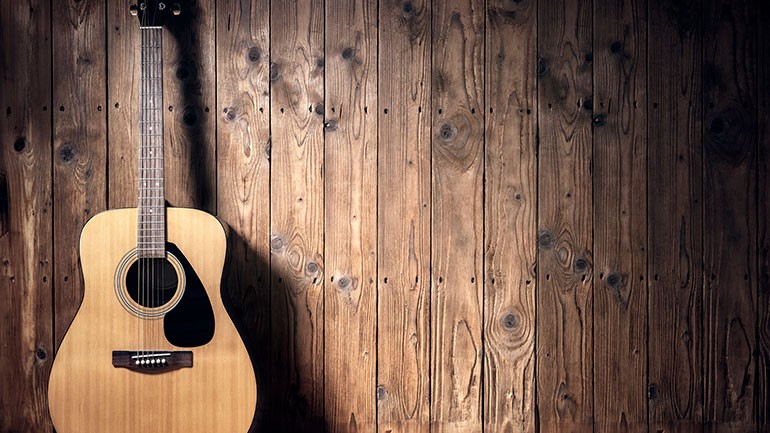Acoustic Sounds Revisited
An updated review of all things with bronze strings, from recording different types of acoustic guitars, optimal mics and where to put them, using alternate tunings, and more

Despite its associations with underlit coffeehouses and three-chord singalongs, the acoustic guitar is in fact among the most versatile of studio instruments, one that is appropriate for nearly any genre. For those who favor a country or folk approach, a key objective is preserving the lovely resonance of the acoustic, particularly when it’s a Martin dreadnaught or other well-made instrument. Push the mic a few feet back and the acoustic strum can add color to the basic track and provide a rhythmic feel as well.
Here’s another mini-dive into all things with acoustic strings—techniques for recording different kinds of guitars (as well as banjo, dobro, and the like), how to use acoustic guitar in the mix, types of mics and where to put them, and other ideas.
Acoustic as a “featured” instrument. When the guitar is the primary focus of the song, you’ll want a setup to match—that is, close enough to the sound hole to capture the guitar’s natural overtones, but with enough distance to prevent an overload of lower frequencies. Most engineers like to aim a mic at the guitar’s 12 fret, allowing a foot or so of space in between. While any kind of microphone will suffice, a condenser is generally preferable (either a large diaphragm, or small capsule for fitting into tighter spots), particularly when you’ve got a top-tier acoustic on hand.
Acoustic as a “background” instrument. As mentioned above, acoustic is also very effective when used as a “fill-in” instrument within the rhythm section—in fact, you may be surprised at how many classic songs are almost singlehandedly driven by an aggressively strummed acoustic guitar. Here you’ll want a sound that’s more rhythmic and less tone-driven—for starters, allow just a bit more space between you and the microphone so that pick strum is the predominant vibe. You may also find that certain kinds of acoustics work better in the background than others, such as those with more mid-range than bass, or slightly smaller or less voluminous models. If your guitar has a built-in pickup, you might even try a few takes with the signal going straight in—as counterintuitive as that might seem, sometimes that nearly toneless jangly sound is exactly what the track needs.
On the other hand, something semi-exotic like a 12-string acoustic guitar can bring a huge bouquet of sound to the proceedings. And you might also consider different chord voicings to contrast with the main progression, such as using a capo or trying various alternate tunings such as open G (both E strings and A string detuned a whole step), or double-dropped D (both E strings down a whole step).
Acoustic in the mix. Finding the right spot for acoustic guitar in your mix can be a subjective decision, but one that is typically the result of trial and error. You might start by listening to some favorite records that feature acoustic in both a lead and supporting role, just to get an idea of how it should sound when recorded properly. Because bass guitar is usually in the center of the mix, you may find it helpful to situate the acoustic guitar elsewhere, such as just slightly left or right, though preferably in a spot that isn’t already occupied by a rhythm instrument. Doubling an acoustic track to achieve a thicker sound, as well as applying compression for a more aggressive feel, have long been go-to techniques and can sometimes pay off, though usually in smaller doses rather than from start to finish.
Finally, acoustic instruments without soundholes—such as banjo, lap steel or dobro—are a whole different animal and may require some initial tinkering before getting a suitable sound. As you’re wont to do with any set up, put your ear in the vicinity of the instrument while it’s being played and stick a mic in a spot that sounds pleasing—with banjo, for instance, you may want to allow upwards of two feet between mic and strings in order to capture the right blend of tone and rhythm.






Community
Connect with BMI & Professional Songwriters